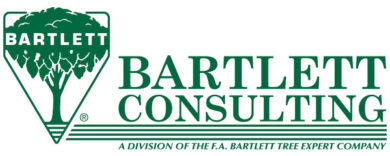Stormwater Run-off and Management
Embracing Georgia Tech’s challenge to recreate pre-development hydrology and preserve native ecology where new development was taking place on campus, landscape architecture and urban planning firm Ecos Environmental Designs partnered with ERTH Products and Big River Industries to engineer a soil mix for a bioretention and landscape area. The goal was to capture stormwater while minimizing run-off on the site’s dramatic grade change. Chemical and biological considerations included creating a living soil containing organic macro- and micro-nutrients and a diverse population of beneficial microbes.
Photos courtesy of ERTH Products, LLC / Big River Industries
For insight into stormwater run-off issues and management options, Landscape and Irrigation recently asked Jeff Speck, vice president of sales & marketing, Big River Industries about how landscape professionals can meet, and overcome, stormwater challenges.
L&I: What are the most prevalent stormwater challenges for landscape design / build and contractor professionals?
Speck: Environmental concerns surrounding the threat and conditions of stormwater involve a multi-billion-dollar concentration among industry professionals. Although there are many challenges caused by stormwater, three primary concerns include the volume and flow of run-off, harmful pollutants in corrupted water, and compacted soils with decreased exchanges of air and nutrients.
L&I: What are a few key purposes in stormwater management?
Speck: There are numerous reasons to conduct stormwater management at both existing and new sites. A few purposes Big River Industries finds particularly important involve the intent to:
Limit the disruption and pollution of natural water flows by managing stormwater run-off.
Limit the disruption of natural water flows by eliminating stormwater run-off, increasing on-site infiltration, and remove contaminants.
Reduce heat islands (thermal gradient differences between developed and undeveloped areas) to minimize impact on microclimate and human / wildlife habitat.
Limit or eliminate the use of potable water for landscape irrigation.
Reduce generation of wastewater and potable water demand, while increasing the local aquifer recharge.
Establish standards and best practices for controlling flooding, erosion, and the release of pollutants into surfaces and waterways.
Implementing these and other best practices can lead to the possibility of earned LEED credits.
L&I: What are a few important factors to consider when working to achieve low-impact land and landscape development?
Speck: Low-impact development is a means to deal with or control stormwater run-off with as little burden to the pre-development environment as possible. It involves land planning such as bioswales and infiltration systems, as well as engineered design in the forms of cisterns, biofiltration and permeable surfaces that help regulate and quell run-off. Low-impact technologies equate to a reduction of impervious cover with the use of permeable pavements and other similar surfaces. Though dissimilar to common compacted stones used under conventional surfaces, permeable technologies include layers of lightweight expanded clay aggregate sitting under the bearing surfaces. In keeping with Best Management Practices (BMPs), these permeable surfaces often have underground storage where retro-fitted systems are installed to manage and treat stormwater flow.
L&I: What can happen to sites where the landscape’s capability to absorb water is insufficient?
Speck: At sites where the landscape or soil has low ability to absorb stormwater, the ground acts as host to surface run-off, causing the flow of water over land. When soil is compacted by saturation and infiltration, the innate particles are pressed together, and pore spaces for water and air are greatly reduced. As the pore space is reduced, there is less movement of water and a marked amount of decreased air and nutrient exchange. With the combination of today’s concentrated populations and construction, impervious surfaces and compacted soil can lead to stormwater run-off, extending to issues of flood control, erosion and even weed invasion.
L&I: What consists of a healthy soil profile that permits filtration and aeration, and why should this be addressed prior to site / landscape installations?
Speck: In general, a good soil profile is approximately 25 percent water, 25 percent air and 50 percent solid particles. The installation and management of healthy soil are keys to necessary aeration. When soils compact over time, an imbalance is created in the soil profile. In this compacted condition, the soil profile is no longer a favorable environment for the microbial activity necessary for viable filtration and healthy plant growth.
Technical advancements we have enacted at Big River Industries led to the development of HydRocks, an all-natural, non-degradable soil enhancer with particles that are non-toxic, absorptive granules. It is an expanded clay lightweight aggregate (LWA), created through a rotary kiln process in which selectively mined clay is fired at 2000 degrees Fahrenheit. Landscape and land development professionals use it as a durable, inert and manufactured filter media that provides a permanent solution to compaction. The LWA does this by incorporating permanent pore space into the soil profile. It has a proven ability to remove phosphorus with a microstructure that serves as an ideal host for bacteria, which are the work horses in the biological treatment process. With an ion exchange capability to immobilize phosphorus and arsenic with filtering properties, the durability of the media and high-hydraulic conductivity provide for longevity of use and smooth drainage.
Obviously, a healthy soil profile is much easier to address upfront than after site development.
L&I: Why is it important to incorporate engineered soils with porous or pervious characteristics to overcome sites with stormwater challenges?
Speck: Engineered or manufactured soils allow for the infusion of necessary nutrient composition, but the features go well beyond soil make-up. Utilization of engineered soils with porosity assists in the unified effort to recreate pre-development hydrology, preserve a site’s native ecology, and emphasize open green space. For example, to capture stormwater while minimizing run-off where dramatic grade changes or problematic conditions are present, our product development team customizes a media mix product known as FiltRocks for use in Geotechnical, construction, land development, and other applications where stormwater run-off is a concern. The result is a ceramic aggregate that is structurally strong, physically stable, environmentally inert, lightweight, and insulative. As a filter medium, we recommend it to increase surface area and allow fast, free drainage, help remove or reduce toxins, and absorb nutrients for long-term, sustainable water treatment. For site developers and stormwater management professionals, this improves functionality and service life, saving material, labor and transportation costs. The porous characteristics support the physical requirements considered in developing an engineered soil mix. Overall, this design allows for good surface infiltration of stormwater, along with high groundwater holding capacity, while not creating a continuously saturated soil, which would be detrimental to plant life.
L&I: How does engineered soil reduce stormwater run-off in bio-swales, bio-retention areas and rain gardens?
Speck: The use of engineered soil utilizing expanded clay lightweight aggregate can further develop economical vegetation systems with improved filtration. Several design methods are commonly used as effective means to capture pollutants, solids, oils, and less soluble metals that are considered to be threatening to clean water supplies. These can include the following:
Bioswales, linear drainage media channels, are planted with appropriate vegetation for the bioremediation of pollutants from urban stormwater run-off. The collected run-off slowly flows at a shallow depth through the media and vegetation, but generally has little or no ground infiltration.
Filter strips are areas of vegetation over which dispersed run-off sheets flow at a very shallow depth. Filter strips are very well suited to treat run-off from impervious areas such as parking lots and may be designed into the overall landscape as parking area islands or edge borders.
Rain gardens, unlike bioswales, are designed to retain water and allow infiltration. Water is cleansed by vegetation and by simple soil systems filtration.
Rain basins are an integral part of a stormwater management design that is gaining popularity. Run-off water is collected and cleansed in order to infiltrate into the ground, thus, reducing or eliminating stormwater run-off into municipal systems.
L&I: How are engineered soils developed and tested to improve plant performance and act as a stormwater pollutants filter?
Speck: Through soil testing, we are able to pre-determine needed infiltration rates while maintaining a certain amount of moisture. Using this information, it is possible to engineer balanced soil with organic content to support proper soil biology for ample plant life, and amend the soil with expanded clay lightweight aggregate. Ultimately, this leads to aeration of the soil and promotes root growth. The lightweight aggregate has a porous surface texture and interior, allowing it to retain up to 35 percent of its weight in water and nutrients. The retained water and nutrients are then released to the root system as the surrounding soil dries.
Chemical and biological considerations include creating a living soil containing organic macro- and micro-nutrients and a diverse population of beneficial microbes. A living soil is essential given it requires fewer chemical inputs, breaks down contaminants, and provides movement within the soil, which increases infiltration and water-holding capacity.
L&I: How do stormwater issues with landscape development differ from those on green roofs, and what challenges and solutions are unique to green roofs?
Speck: While both land sites and green roofs share some comparable issues caused by stormwater, run-off, and precipitation, the primary difference is that of excess weight on roofs. The weight caused by soil on green roofs, especially when compacted with water, is as much a concern as the weight-bearing capacity of the building, plant and tree selection, and the structure itself. In addition to enhancing the soil mixture as a growing medium, engineered soil can greatly reduce the weight of the overall media to help meet structural design requirements. We recommend this type of absorbent and porous media due to its characteristics of permeability, stability and fertility that are essential to a successful green roof system. Our company works closely with manufacturers of specialty soils including Garick Corporation and ERTH Products to supply landscape and horticulture contractors with customized shipments and related education. The teams at Garick and ERTH Products use our expanded clay lightweight aggregate as the foundation for their green roof media, adding vital and organic nutrients that become available to roots as needed. For landscape and green roof contractors, the attributes include retention of water on site, reduction of the urban heat island effect, breakdown of contaminants that would otherwise wash down gutters, and the creation of an aesthetically pleasing roof landscape and natural habitat.


